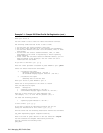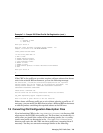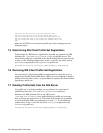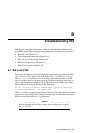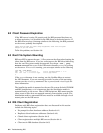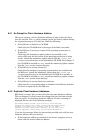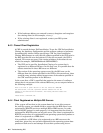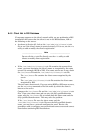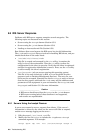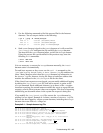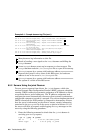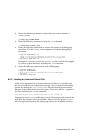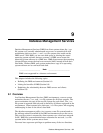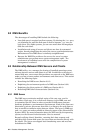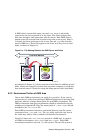
8.5 RIS Server Response
Problems with RIS server response comprise several categories. The
following topics are discussed in this section:
• Servers using the bootpd daemon (Section 8.5.1)
• Servers using the joind daemon (Section 8.5.2)
• Loading an incorrect kernel file (Section 8.5.3)
Boot failures often occur because the RIS server has invalid information.
The risdb and bootptab files are involved in handling RIS clients, and you
should check them in the order listed:
• /var/adm/ris/clients/risdb
This file is created and managed by the ris utility; it contains the
utility’s view of the environment. Run the ris utility to show the
configuration for the client in question. Verify that the client is registered
and that its registration information is correct. If not, use the ris utility
to add or modify the client’s registration.
• /etc/bootptab (only on servers running this operating system)
This file is not used exclusively by RIS, so it can be edited for other
purposes (such as Dataless Management Services). The entry for your
client may be corrupted. Examine the client’s bootptab entry to ensure
that the entry agrees with both the risdb entry and the addresses and
parameters of the equipment in your environment. See bootptab
(4) and
dhcptags
(4) and Section 5.1.3 for more information..
_____________________ Caution _____________________
A RIS server should run either the bootpd or the joind daemon.
A RIS server running both of these daemons is not supported,
and results are unpredictable.
8.5.1 Servers Using the bootpd Daemon
A server can respond to BOOTP requests from clients. If the server’s
information is correct for the client but the server still fails to respond,
enable BOOTP message logging on the server :
1. Edit the server’s /etc/inetd.conf file.
2. Modify the line for bootps to include the −d option as a bootpd
command argument. For example:
bootps dgram udp wait root /usr/sbin/bootpd bootpd -d
8–6 Troubleshooting RIS



